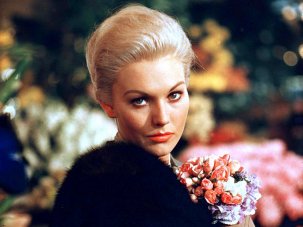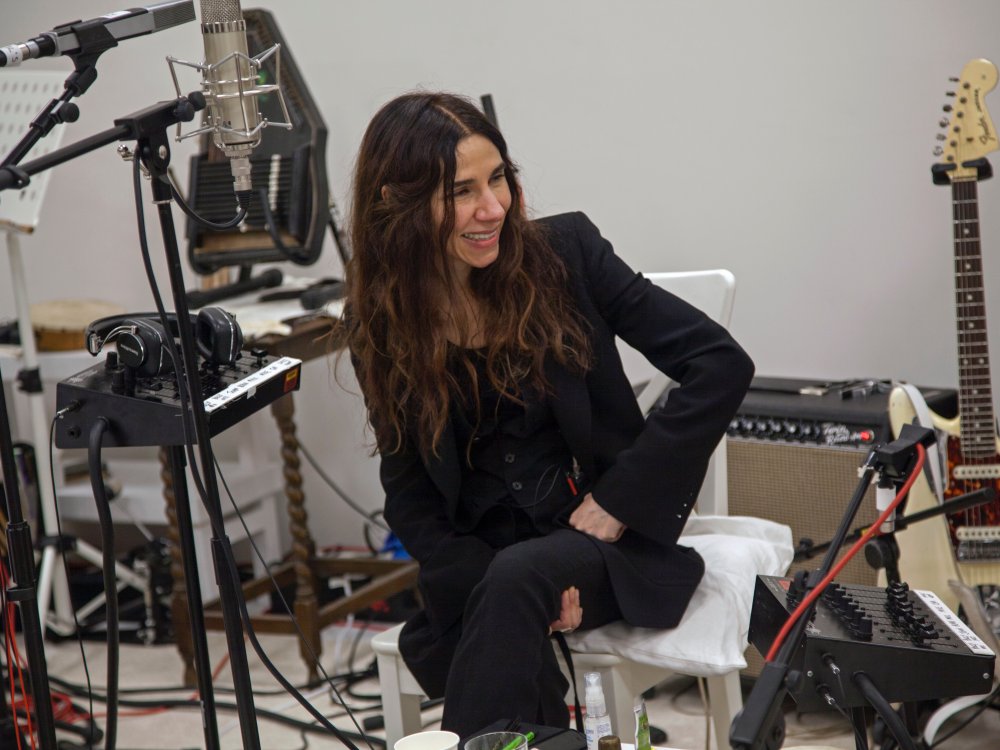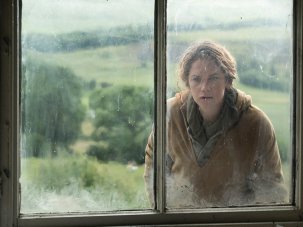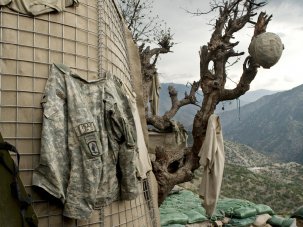Among British musicians of the past 30 years, there has been no more urgent or adventurous figure than P.J. Harvey. A protean singer, instrumentalist, composer, poet and sculptor, she creditably played a business-suited Mary Magdalene in The Book of Life, Hal Hartley’s 1998 film about Jesus’s second coming in premillennial Manhattan. Beyond soundtrack contributions, though, her engagement with cinema has been minimal. Her legions of fans will therefore savour her presence in photojournalist Seamus Murphy’s humanist documentary A Dog Called Money as both a private researcher (more sensory than fact-finding) in Afghanistan, Kosovo and Washington DC, and as an inventive, playful recording artist.
United Kingdom/Ireland 2019
Certificate 15 93m 46s
Director Seamus Murphy
[1.78:1]
In colour
UK release date 8 November 2019 in cinemas and on demand
Distributor MUBI
mubi.com/films/a-dog-called-money
► Trailer
Cynics might object that Harvey is a white liberal tourist exploiting other people’s penury and endangerment for her own artistic gain, given that her field trips with Murphy between 2011-14 have spawned a poetry book, an album – 2016’s propulsive The Hope Six Demolition Project – and the film. Yet it obviously took courage for her to walk the streets of Kabul (in a modified burqa) and in and around the Kosovan capital, Pristina. Harvey is sensitive to the ‘tourist’ issue: exploring a looted house in Kosovo, the detritus on its floors all that remains of the lives once lived there, she queasily admits: “These were country people and I’m stepping on their things in my expensive leather sandals.” She proves a pithy journalistic observer too, noting, for example, that there’s no metro station in Georgetown, DC’s most historic district, because “they” don’t want black people visiting from the poor neighbourhoods across the Potomac.
Music emerges as a liberating Esperanto in the film, Harvey enjoying the ingenious freestyle rapping of black kids from one such ’hood, Anacostia, and jamming with Kabul musicians. A Dog Called Money takes its title from the pet of a charismatic young female gang leader and rapper in Anacostia whom Harvey and Murphy sadly watch quaffing vodka as if it were water.
Harvey first expressed interest in collaborating with Murphy after she saw his 2008 Darkness Visible exhibition of stark black-and-white photographs of Afghanistan. He subsequently shot short films for each of the 12 tracks on Let England Shake (2011), Harvey’s rueful semi-pastoral meditation on the horrors of World War I. Like the great Hungarian combat photographer Robert Capa, Murphy has an unerring eye for poetic compositions that emphasise faces, isolated soldiers and civilians in battle zones, and anomalous juxtapositions of vulnerable non-combatants and military personnel. The documentary needs no words when Murphy shows Afghanistan’s bombed-out ministry of defence building, mangled military hardware on a hillside and two young girls running alongside his speeding car as he videos them from inside. To say that Harvey fits seamlessly into these scarred terrains wouldn’t be accurate, but she is respectful, and as unobtrusive as Murphy and editor Sebastian Gollek allow her to be.
A Dog Called Money features dynamic montages. One of them, cut to Harvey’s blues song The Ministry of Social Affairs, wryly addresses masculine energy as it marries images of a US surveillance blimp and a uniformed CCTV-watcher with shots of a plane, a helicopter, a tank, soldiers, building workers, a hobbling man, a young shepherd, a boy firing a catapult and another twirling a pennant, an elderly Afghan riding an ass and two others tussling in a market, smoking kilns, a horseman and wrestlers. As the only woman in the sequence, Harvey is its feminine conscience.
The film’s editing is problematic, however. Kaleidoscopic to the point of overwhelming, A Dog Called Money frequently loses narrative cohesion as Gollek and Murphy cut, with seemingly increasing rapidity, between Harvey’s travels and footage of her and her band recording the resulting songs. This fragmentation dilutes the intensity and complexity of Harvey’s experiences and the magic and toil of her riveting creative process. The swivelling between locations does heighten the ideas of common humanity and subjugation and the unifying power of music, but longer sequences, such as those in Kirsten Johnson’s likeminded Cameraperson (2016), would have enriched viewers’ appreciation of Harvey’s valiant journey.
-
The 100 Greatest Films of All Time 2012

In our biggest ever film critics’ poll, the list of best movies ever made has a new top film, ending the 50-year reign of Citizen Kane.
Wednesday 1 August 2012
-
The best films now on UK streaming services

Looking for the best new cinema releases available on British VOD platforms? Here’s our guide to how to keep up with the latest movies while you’re...
-
The Digital Edition and Archive quick link
Log in here to your digital edition and archive subscription, take a look at the packages on offer and buy a subscription.








